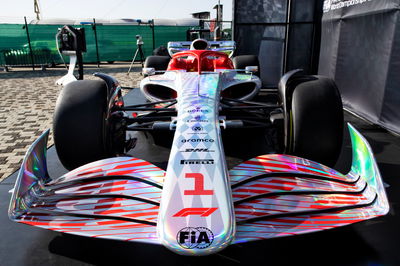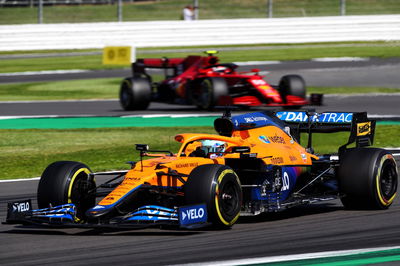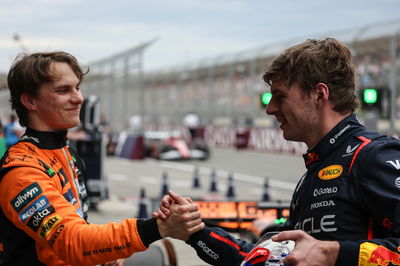Lewis Hamilton won't be bullied - 10 things we learned from F1's British GP
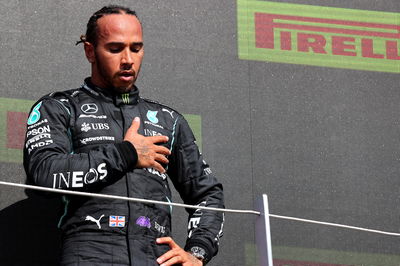
Here are 10 things we learned from F1's triple-header…
1. Hamilton prepared to go toe-to-toe with Verstappen
Up until the British Grand Prix, Max Verstappen has enjoyed the upper hand over Lewis Hamilton in wheel-to-wheel combat. He pushed Hamilton over the kerbs at the start at Imola, while in Barcelona, Hamilton couldn’t turn in as Verstappen aggressively lunged into the first corner.
With Verstappen seizing the initiative in the title race, Hamilton knew he couldn’t afford to let Red Bull claim yet another victory. A gap presented itself on the run down to Copse, and Hamilton went for it.
In recent years, Hamilton has often been calculated when making overtaking manoeuvres as he knew he had the performance advantage or ability to get past later in the race, which isn’t the case with Verstappen in 2021. With this in mind and Verstappen coming out on top when the pair have gone head-to-head this season, it’s no surprise Hamilton went for an aggressive, opportunistic move into Copse corner, spurred on by his home fans.
The seven-time champion made a statement to Verstappen and Red Bull that he is prepared to go toe-to-toe. Hamilton came out on top this time around - he won the battle of Silverstone, but will he win the war?
2. Verstappen remains the favourite
Verstappen still remains the favourite despite his second non-score of the season at the British GP. Mercedes’ pace on the medium tyre especially suggested that Verstappen probably would have had a comfortable afternoon had he maintained first-place into Copse corner.
The Red Bull-Verstappen package seems more adaptable and has consistently performed at every track so far in 2021 - the same cannot be said about Mercedes given its peaky nature and varying degrees of success. While Hamilton has an outstanding record at the Hungaroring next time around, hot temperatures combined with softer tyres may make it difficult for Mercedes, especially with Ferrari expected to go well there.
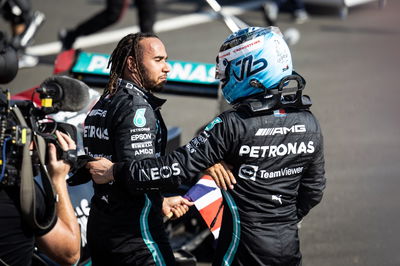
3. The best and worst of Bottas
Bottas picked up his sixth podium of the season at Silverstone, four more than Sergio Perez in the second Red Bull. Azerbaijan and Imola aside, it’s been a solid season for the Finn who continues to fight for his future with Mercedes.
While he still sits behind Lando Norris in the drivers’ championship, had it not been for his botched pit stop at Monte Carlo, he’d be comfortably in third with seven podiums to his name. At the British GP, we saw why Mercedes wants to keep Bottas, but also why it could replace him.
The 31-year-old was the perfect team player across the weekend. In qualifying, he ensured Hamilton benefitted from a slipstream, while in the sprint, he backed off into Turn 1 to ensure his teammate retained second at least.
He obeyed Mercedes’ instruction to move out of the way for Hamilton, allowing him to take his eighth victory at Silverstone. But still, it was a missed opportunity.
Given Hamilton’s penalty and Verstappen’s retirement, it was the perfect opportunity for Bottas to take his first victory since Russia last year. Poor starts allowed Leclerc and Norris to get by early on, leaving him forced to run a compromised strategy to ultimately get ahead of the McLaren driver.
Silverstone showed the arguments for and against retaining Bottas for 2022.
4. Perez's stagnation
It was another tricky weekend for Perez as he dropped to fifth in the drivers’ championship. A spin in the sprint race dropped him to the back of the grid, while a lacklustre race day performance - not helped by Red Bull’s peculiar strategy choices - compounded an abysmal weekend for Perez.
Perez has often been applauded for being Red Bull’s answer to solving its problem with regards to who partners Verstappen. It’s too premature to say that given his inconsistencies this season.
At tracks that are rear-tyre limited - Bahrain, Azerbaijan or where tyre preservation is key in making a strategy work - France - Perez will thrive. However, his lack of qualifying pace this season will continue to be his undoing with the likes of Norris, Leclerc and Pierre Gasly in striking range on a consistent basis.
Perez will escape criticism because he’s new to the team but on balance, he’s had the fastest car this season and given how well he performed for Racing Point in 2020, he should be a third in the championship. Things turn around fast in F1 so a strong Hungarian GP will silence any doubters.
5. Leclerc heads Ferrari’s resurgence
For 50 laps it looked like Charles Leclerc was going to be a grand prix winner again. After inheriting the lead from Hamilton following his tangle with Verstappen, Leclerc controlled the race beautifully from the front and looked to have the pace advantage on the medium tyres.
Mercedes’ true pace was unleashed on the harder rubber but it was Leclerc’s strongest weekend of the year. Fourth in qualifying, followed up by an impressive drive to second where he probably was deserving of the victory.
Ferrari was concerned that the front tyre issues that plagued the team at Paul Ricard would happen again at Silverstone because both tracks are front-limited, but it wasn’t the case. A sign of Ferrari’s improvement as a team backed up by one of the sport’s most exciting talents.
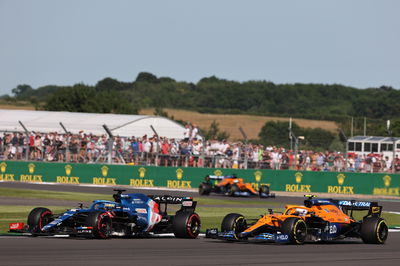
6. Alonso proves age is just a number
There’s no doubt that Fernando Alonso is still one of F1’s best drivers. The Alpine driver starred in Saturday’s sprint race by charging his way up to fifth from 11th on the grid on the opening lap.
He dropped to seventh as the faster McLarens overtook him but it was still a stunning performance from the two-time champion. His start on race day wasn’t as impressive but he still got the better of Sebastian Vettel.
Alonso kept Lance Stroll at bay for much of the race to secure seventh - his fifth consecutive points finish of the season. The Spaniard turns 40 next week and there are no signs of him slowing down.
7. Russell shows Williams is on the right track
George Russell continued to show Williams is on the right track with his second consecutive Q3 appearance. Russell maintained that in the sprint but was awarded a three-place grid penalty for colliding with Sainz on the opening lap.
Starting outside the top ten, Russell dropped to 14th in the early stages before recovering to finish 12th. It’s easy to forget where Williams was in terms of performance in 2019, which ironically is when it scored its last point in F1.
Russell’s performances are not only good for his chances but Williams’ long term given that other drivers will be more attracted to joining the team should it need a replacement for the talented Brit.
Williams is on the up and points in the remaining part of the season will be a just reward for its progress.
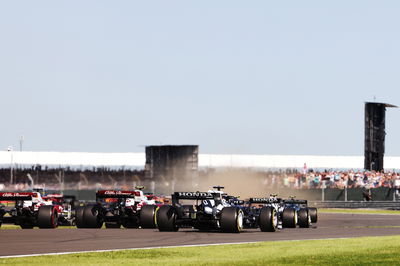
8. Sprint qualifying didn’t improve the show
It’s fair to say without an exciting start and the brilliance of Alonso, F1’s first-ever sprint race would have been a complete snoozefest. Granted, this current generation of F1 cars don’t play into a close, exciting race.
The whole premise behind introducing this new format was to ‘spice up the show’, which it didn’t. The main grand prix was still exciting and having an additional race on the Saturday didn’t take away from the main event.
9. Less practice is better
One aspect of the British GP weekend that worked well was having just one hour of practice before qualifying. Less track times for the teams and drivers meant they couldn’t improve their set-ups and prepare properly for qualifying.
The lack of practice resulted in a thrilling battle between Hamilton and Verstappen for top spot, while the midfield was tightly contested. Having three days of competitive action was a real positive and a nice change from the traditional weekend format.
10. A glimpse into 2022
Formula 1 unveiled a full-scale mock-up of the car that will be used for its new era of regulations starting in 2022. Labelled “the most futuristic racing car of all time”, F1’s 2022 car gives us a glimpse of what to expect as the sport undergoes its biggest regulation change since 2017.
F1 hopes to make the racing closer between the teams while allowing for better overtaking. In conjunction with the cost cap, the sport hopes that it is a more level playing field moving forward.
While there’s likely to be some variation when the teams unveil their new cars ahead of testing next year, it was nice to see the direction F1 is heading.
